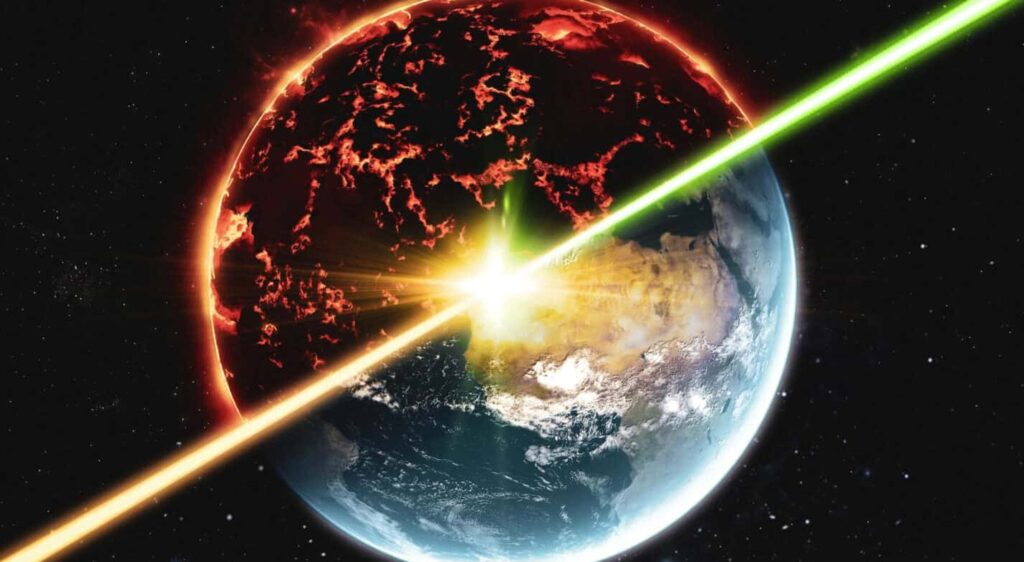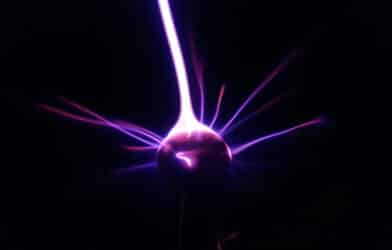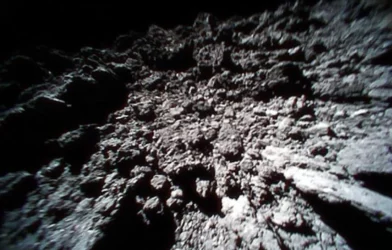Earth’s origins have long been an area of deep interest to astronomers and geologists alike. Now, using advanced laser technology and ultrafast X-rays, a team of international scientists have unraveled the quantum secrets of iron within molten rock, shedding light on our planet’s history and geological phenomena.
The study reveals how the microscopic quantum state of iron atoms, specifically their “spin state,” influences the properties of molten rock materials deep inside rocky planets like Earth. This quantum property of iron, the spin state, is a fundamental aspect of how electrons in each iron atom behave, impacting their magnetic behavior and chemical reactivity.
“In terms of exploring Earth’s history, we’re investigating processes that took place over 4 billion years ago,” says study collaborator Dan Shim, a researcher at Arizona State University, in a media release. “The only way to study this is by using modern technology that operates in femtoseconds. The contrast between these immense time scales is both eloquent and startling: it’s akin to the idea of a time machine.”
One of the key findings of the study is that, under extremely high pressures and temperatures, iron in silicate melts primarily assumes a low-spin state. In this state, the electrons in iron atoms stay closer to the nucleus and pair up in their energy levels. This configuration makes iron less magnetic and more stable, influencing whether it prefers to exist in molten rock or solid form and affecting the conductivity of molten rock.
Researchers recreated the intense conditions within molten rock materials, referred to as silicate melts, to measure the spin state of iron. These extreme conditions were achieved by employing powerful lasers and ultrafast X-rays.
“While we can glean a lot from studying rocks and fossils, some aspects of Earth’s early history are lost because few records from that time exist,” notes Shim. “That’s what makes this study unique.”
Earth’s beginnings were marked by intense asteroid impacts, some as large as cities, around 4.3 to 4.5 billion years ago. These impacts generated immense heat, potentially melting Earth’s outer layers and creating a vast ocean of molten rock.
“It’s been theorized that under the immense pressure of these impacts, the molten rock may have became denser than the solid rock,” says study collaborator Arianna Gleason, scientist at the Department of Energy’s SLAC National Accelerator Laboratory. “This denser magma would have sunk towards the core, capturing the chemical signatures of that era. Some believe remnants of this magma layer may still exist today, holding clues from 4.5 billion years ago. Volcanoes like those in Hawaii could be releasing these ancient chemical signatures, providing us a glimpse into Earth’s distant past.”
As material descended toward Earth’s center during this tumultuous period, it is believed to have absorbed more iron, making it denser. The research team plans to continue their investigations by studying melts with higher iron content and exploring the role of water in these processes, which could provide insights into Earth’s water cycle and climate.
Furthermore, the study may help explain peculiar seismic velocities detected deep within Earth’s mantle, a longstanding mystery for scientists. The team intends to use seismic imaging to distinguish between ancient materials from 4.5 billion years ago and more recent materials, shedding light on the origins of these seismic anomalies.
The study is published in the journal Science Advances.












